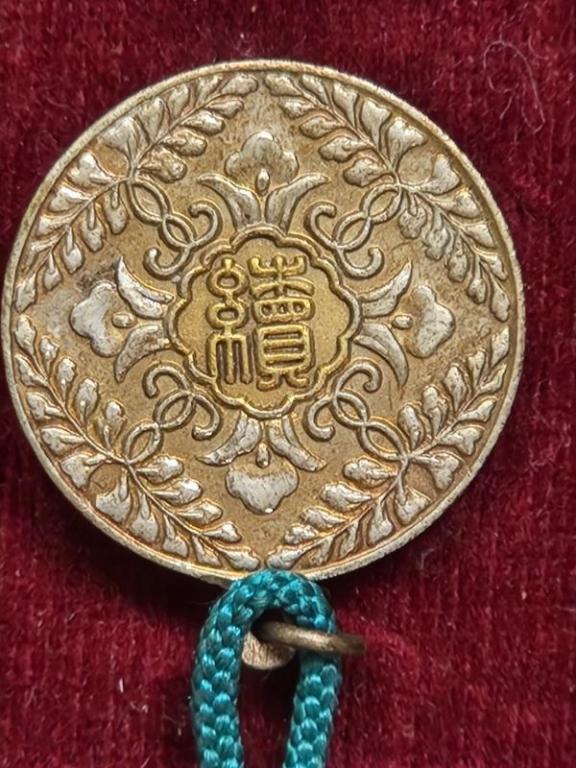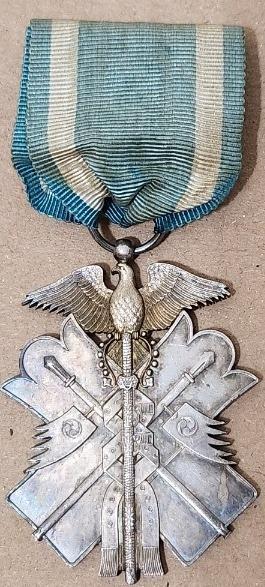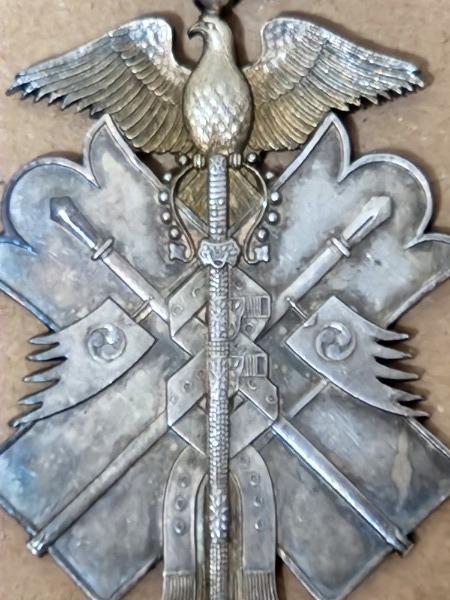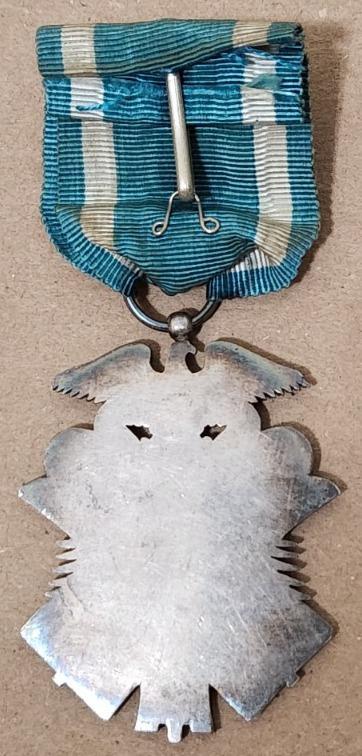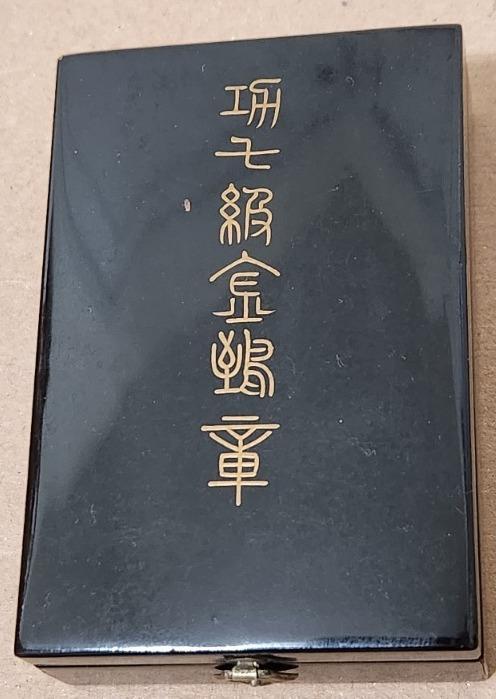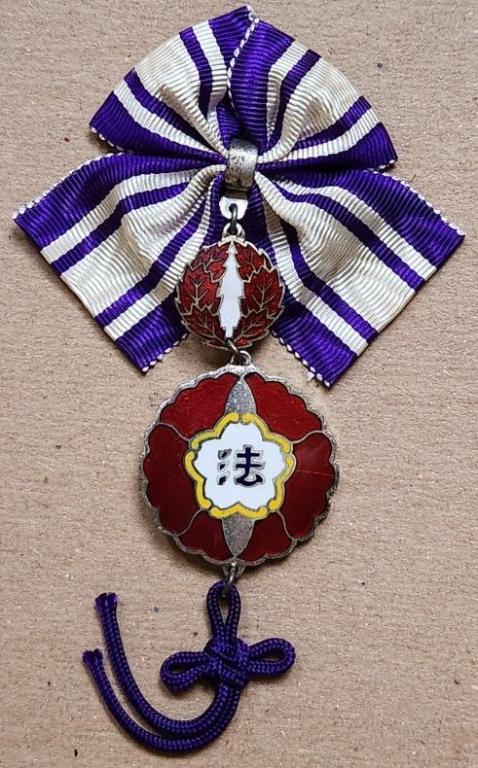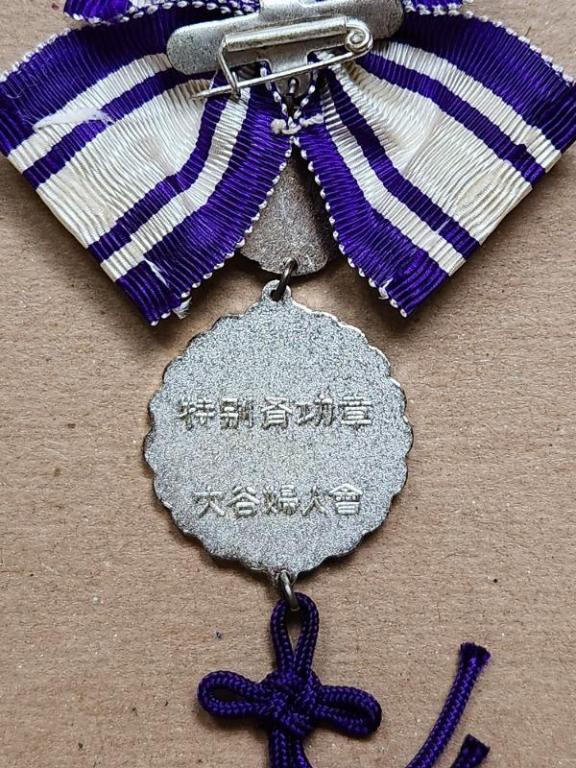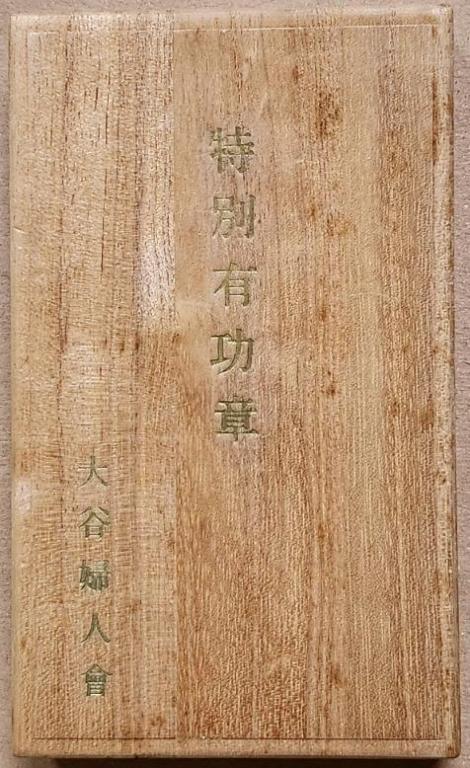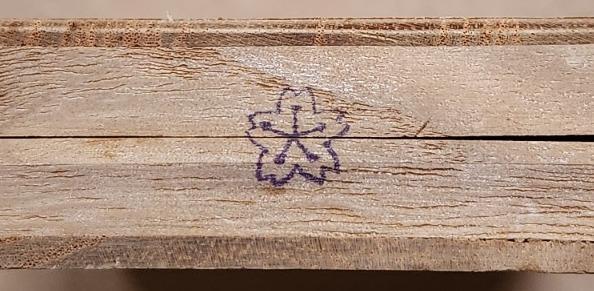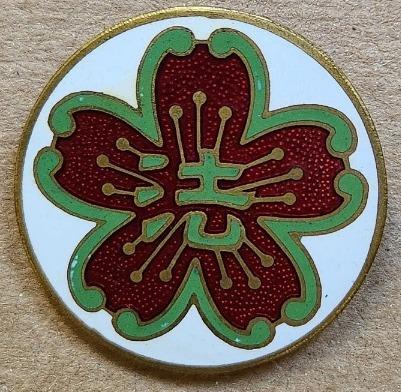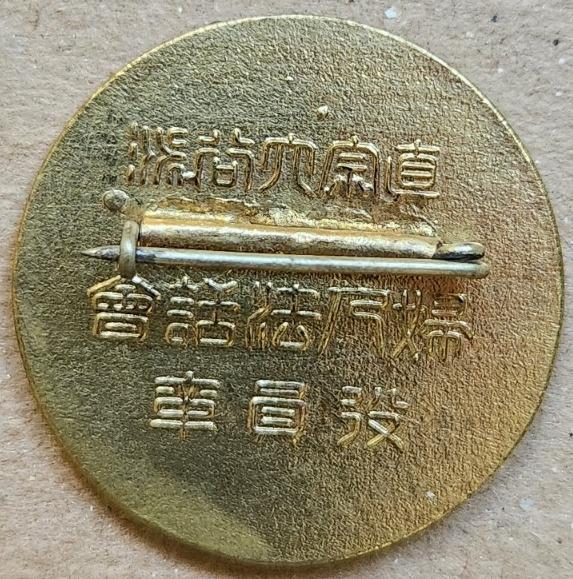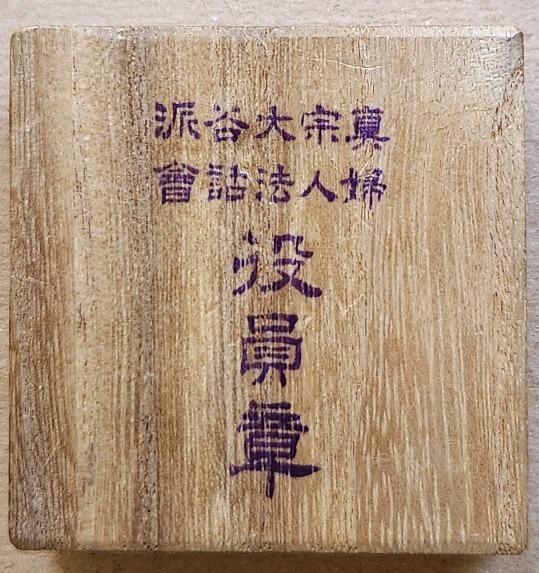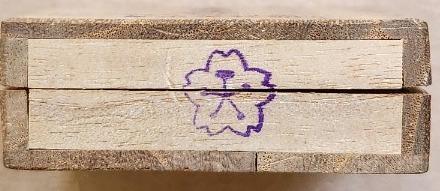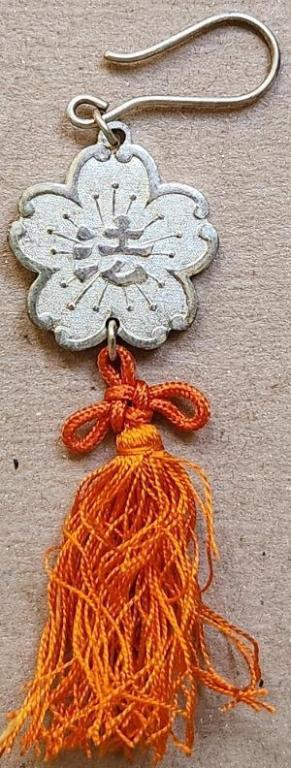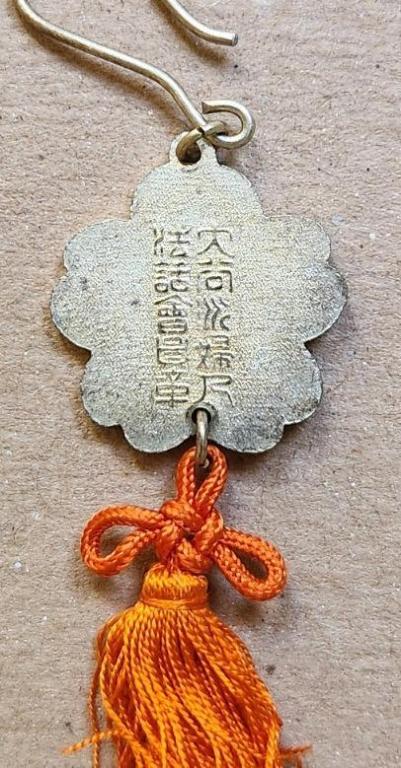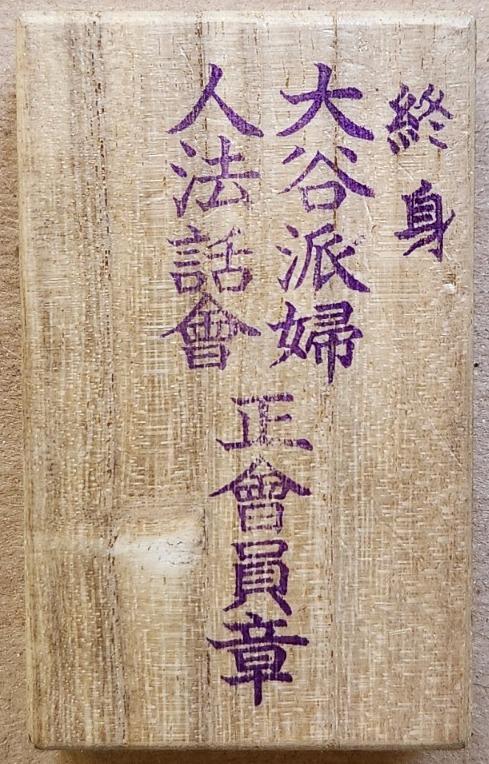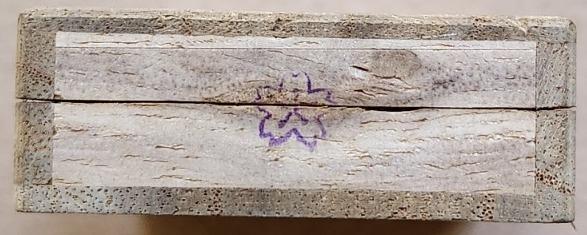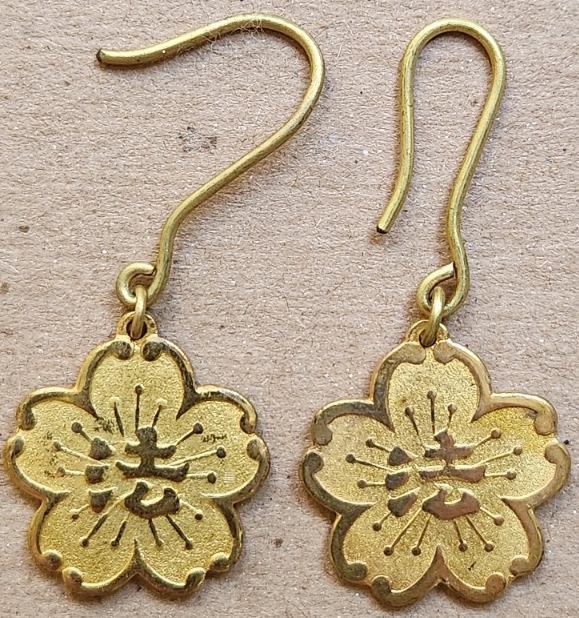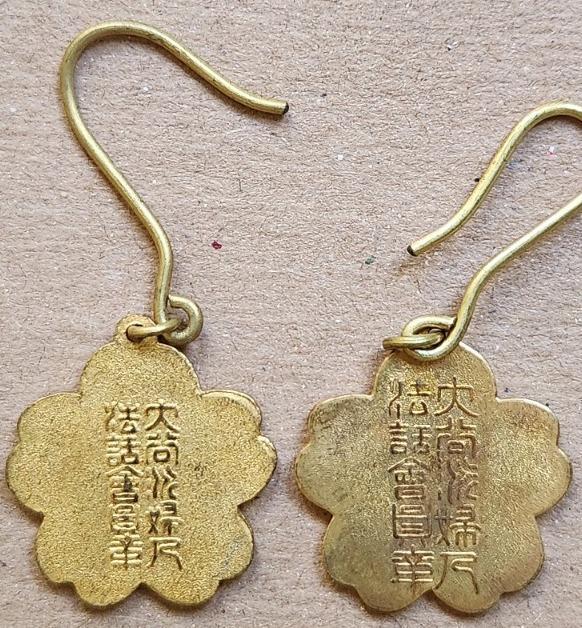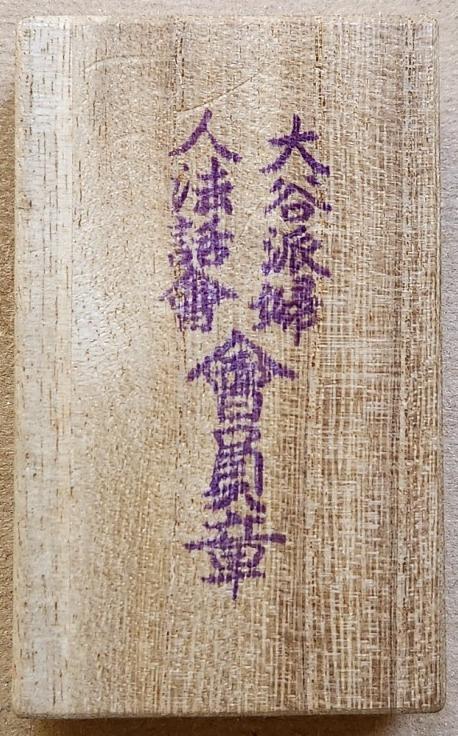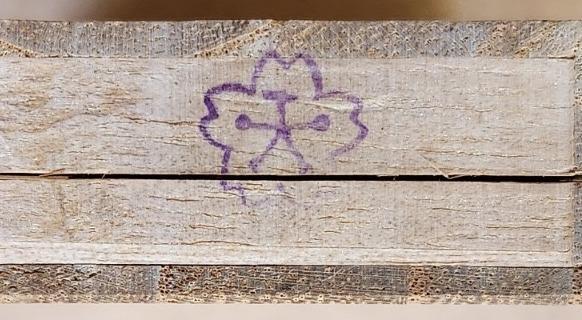-
Posts
468 -
Joined
-
Last visited
-
Days Won
20
Content Type
Profiles
Forums
Blogs
Gallery
Events
Store
Everything posted by TracA
-
I just stumbled across this post. Per Numista this is a promotional/advertising token. See https://en.numista.com/catalogue/index.php?r=pure+genius&ct=exonumia. The website claims these tokens were used in the UK as well as overseas territories and dependencies. No dates of issue are provided, that I could find, but one of the five entries lists the minter as Pobjoy, which according to the Numista page was in operation from 1963 to 2023. See https://en.numista.com/catalogue/mint.php?id=26. All the best, Tracy
- 1 reply
-
1
-
No One, Ah yes, Kite's are referred to by rank/grade and not by class. I wonder if Nick Komiya's WRF article on the Golden Kite sheds any light on why: https://www.warrelics.eu/forum/japanese-militaria/story-golden-kite-671453/. I currently don't have time to review his article. Tracy
-
No One, Thank you for the assistance! It is greatly appreciated. Tracy
-
Greetings, I have a Shinshū Ōtani School Hereditary Lecturer Association Regular Membership Badge in my possession and I'm having a devil of a time figuring out the single seal script inscription on the obverse of the badge. Despite pouring over a website that claims to list 2,500 different seal scripts, I just cannot locate this one. I can locate the left most kanji, but not the entire kanji. I've posted a picture below, and any assistance would be most appreciated. Thank you. Tracy
-
In late May of this year I was able to add a nice Meiji 7th Class Kite to my collection, and now after a little searching I was able to obtain a cased Taisho 7th Class Kite. My classification is based upon JapanX’s excellent work here on GMIC at https://gmic.co.uk/topic/51228-classification-of-golden-kites-in-6th-and-7th-class/. The Kite below is definitely pre-Showa: when starting from below and moving up (1) the distance between the fourth aperture of a harness and the first tipping over of a harness is very short and (2) there are two apertures at the second tipping over of a harness, instead of just one aperture. However, just like with Showa Kites my most recent acquisition has the second wing tip as the longest. This fact, and the fact that the top two apertures on the left side of the harness are a relatively wide distance apart, is what makes this Kite fall within the “Taisho” type, per JapanX’s study. However, per his classification there are two Taisho types and a total of five sub variations, three for Type 5 and two for Type 6. So, where does my Kite fall within this schema? I narrowed it down to either Taisho Type 5.3 or 6.2. I looked back and forth numerous times, took a few breaks, went back to looking, and finally decided that my new acquisition is Taisho Type 5.3. However, such “hard line” classifications as Meiji vs. Taisho and even whether or not such classifications crept into the Showa era are clearly not set in stone: see JapanX’s final post on September 22, 2011 in the above referenced thread. So, perhaps the title of this thread, with its flavor of definitiveness, is a bit misleading. There are no hallmarks on the Kite, the ribbon is quite soiled as well as torn on the reverse, and the gold inscription on the lid is of the earlier six kanji variety as opposed to the later seven kanji variety. I am delighted to have this in my collection. I hope that you enjoy it. All the best, Tracy Obverse: The Kite and apertures up-close, although the focus is a bit off: Reverse: Case lid:
-
Hello No One, What an amazing collection. Are all of them in your possession? Tracy
-
Hello Claudius, A wonderful 1912 - 1930 passbook. You might want to check out Nick Komiya's amazing passbook thread on the War Relics Forum, here: https://www.warrelics.eu/forum/japanese-militaria/evolution-japanese-army-passbook-1871-1945-a-708090/. In particular, check out Nick's 09-08-2018, 03:15 PM #15 post on the second page. All the best, Tracy
-
Azyeoman and No One, Splendid collection of badges. I also have always liked this badge because of the three-legged raven story. All the best, Tracy
-
Hello No One, That is magnificent. Thank you for doing that, and thank you for the compliment. I should figure out how to create an album on GMIC. I believe that others have done so. All the best, Tracy
-
I have another Otani Badge for today. This one is a merit badge. Specifically, the Special Merit Badge. The badge is 30 mm in diameter and 2.5 mm thick. The obverse is enameled in red, white, mustard, and purple for the center of 法, the only inscription on the obverse. It means “Dharma/Teachings of Buddha”. The central design is of a cherry blossom. All of the non-enameled surfaces, and thin outlines of the design, including what could be two smooth leaves at 12h and 6h, are silver. Above the badge is an attachment 27 mm wide by 17 mm high to the bottom of the attached ring. The attachment is 1 mm thick. The attachment is in the design of a wreath of leaves enameled red, with an enameled white center and silver colored edging and leaf veins. The reverse is sandblasted and silver in color with a two horizontal row inscription. The top row is 特別有功章 for “Special Merit Badge” and the bottom row is 大谷婦人會 for “Otani Women’s Association”. Finally, at the bottom of the badge hangs a purple cord with two tails. The cord has a bow and knot design that is exactly like that found on Women’s Patriotic Association membership badges that have a cord. It is also of the same design as that found on the Otani Lifetime Regular Membership Badge. The ribbon is a double bow in a beautiful shade of purple and white, in the following dimensions starting from either the top or bottom edge of the ribbon: 6 mm purple; 2 mm white; 2 mm purple; 8 mm white; 2 mm purple; 2 mm white; 6 mm purple. I note that on JapanX’s excellent Medals of Asia website the bow appears blue and white, not purple and white. See https://asiamedals.info/threads/otani-womens-association-merit-badges.22933/#post-358746. The box is made of wood and has the following dimensions: 89 mm wide x 149 mm long x 23 mm high. The top edges are slightly beveled. On the lid in impressed gilt characters are two columns of kanji. The center column is 特別有功章 for “Special Merit Badge” and the lower left column is 大谷婦人會 for “Otani Women’s Association”. There is no medalbed. On the bottom edge of the box is a cherry blossom stamp in purple ink split between the top and bottom half of the box, indicating the correct alignment of the top and bottom of the box. This is a very nice looking badge and the contrast between the red enamel and the purple in the bow is strikingly beautiful. I hope that you enjoy this one. I am currently “out” of Otani badges to post. 😃 All the best, Tracy Obverse: Reverse: Box lid: Alignment stamp:
-
No One, A beautiful design on this emblem. All the best, Tracy
-
Greetings, Something different for my Otani Women’s Buddhist Association collection: a director’s badge. The badge is circular with a 30 mm diameter. It is 2 mm thick. The central design is of a cherry blossom with the inscription 法, hō for “Dharma/Teachings of Buddha” in the center of the blossom. The obverse is enameled as such: the cherry blossom is red with an olive green border and 法 is also olive green with a gold border. The background is white and the entire obverse design is bordered with what looks to be a very thin gold painted outline. The circumference of the badge has a 1 mm gold border. The 2 mm thick edge and reverse are gold, with the latter finely sandblasted. The reverse pin back is of the “safety pin” variety, and it is threaded through an 11 mm tube that is attached to the reverse of the badge. The obverse inscription is as noted above. The reverse inscription is in three rows of very stylized kanji. The top row is 派谷大宗真; the second row is 會話法人婦; the third row is 章員役. Thus, “Otani Sect of Shinshu Women’s Dharma Association Director’s Badge”. The box is made of wood and it is 49 mm wide x 50 mm long x 17 mm high. On the lid in purple stamped ink are two horizontal rows of kanji and one vertical row of kanji centered under the second horizontal row. The top row is 派谷大宗真 for “Otani Sect of Shinshu”; the second row is 會話法人婦 for “Women’s Dharma Association”; the vertical row is 役員章 for “Director’s Badge”. There is a white medalbed but it is not recessed for the shape of the badge. On the top edge of the box is a purple ink stamped cherry blossom for alignment of the top and bottom of the box. This badge has a pleasing appearance. It makes a wonderful addition to my collection. All the best, Tracy Obverse: Reverse: Box lid: Sakura alignment stamp:
-
Hello Azyeoman, Interesting indeed. Well, i guess that the mystery has been solved. 😀 Tracy
-
Archie, Thank you. Much appreciated. Your threads are also outstanding places for information. All the best, Tracy
-
Second up, from my post above, Otani Women’s Association Lifetime Regular Membership Badge with a red/orange tassel. This badge is 23 mm wide and also in the shape of a cherry blossom. The entire badge is silver, the reverse finely sandblasted, and the device for wear is a french wire closure hanger. There is a loop on the bottom of the badge at 6h and through it is threaded a red/orange cord ending in a tassel. At the top of the cord is a bow and knot design that is exactly like that found on Women’s Patriotic Association membership badges that have a cord. Indeed, the entire tassel is reminiscent of the cords that are sometimes found on WPA membership badges, albeit shorter. The obverse has a simple inscription: 法 for “Dharma/Teachings of Buddha”. The reverse inscription is in two columns of stylized kanji. The right column is 大谷派婦人 and the left column is 法話會員章 for “Otani Women’s School Dharma Discussion Association Membership Badge”. The reverse inscription vis-à-vis the inscription on the box lid omits the first 會 for “association”. See below. The wooden box has the following dimensions: 43 mm wide x 73 mm long x 12 mm high. The inscription on the lid is not impressed, gold kanji. Rather, it is purple stamped ink in four columns: the rightmost column is 終身 for “Lifetime”; the next column is 大谷派婦 for “Otani Women’s School”; the third column is 人法話會 for “Dharma Discussion Association”; the fourth column, which is under and between the right and left columns, is 正會員章 for “Regular Membership Badge”. There is no medalbed. On the top edge is a purple ink stamped cherry blossom for alignment of the top and bottom of the box. I would assume that a Lifetime Regular Membership Badge would be a higher rank than the “simple” Membership Badge of which I posted above. With that in mind, gold often denotes a higher rank than silver, so I would have expected the colors of the Membership Badge and the Lifetime Regular Membership Badge to be reversed. Alas, they are not. Perhaps there is something here that I am not understanding. This is also a simple, utilitarian badge that is made a bit snazzier with the addition of the red/orange cord. I hope that you enjoy it. Tracy Obverse: Reverse: Box lid: Sakura alignment stamp:
-
I agree with Vince and Graf, and the money that you save can be spent on additional medals. 😃 Tracy
-
Greetings, I am returning to this thread after about 3 ½ months. I have another merit badge coming (hopefully this week) but for now I want to post about some membership badges and a director’s badge. First up is what I think is a simple membership badge. The badge is 23 mm wide and in the shape of a cherry blossom. It is of the same design as the central portion of the merit badge obverses. The entire badge is gilt, the reverse finely sandblasted, and the device for wear is a french wire closure hanger, like one would find on earrings. As with the merit badges the obverse has a simple inscription: 法, hō for “Dharma/Teachings of Buddha”. The reverse inscription is in two columns of stylized kanji. The right column is 大谷派婦人 and the left column is 法話會員章 for “Otani Women’s School Dharma Discussion Association Membership Badge”. The box is made of wood with the following dimensions: 43 mm wide x 73 mm long x 12 mm high. The inscription on the lid is not impressed, gold kanji, but rather purple stamped ink in three columns: the right column is 大谷派婦 for “Otani Women’s School”; the left column is 人法話會 for “Dharma Discussion Association”; the central column, which is under and between the right and left columns, is 會員章 for “Membership Badge”. There is no medalbed. Note that the reverse inscription omits the first 會 for “association”. Below you will actually see two of the same badge. I included two because the reverse inscription for the one on the right is larger than the one on the left. This is a simple, what I would call utilitarian badge. All the best, Tracy Obverse of the badges. The one with the larger font is on the right: Reverse. Note the larger sized kanji for the badge on the right: The box lid, with a stamped purple ink inscription: The stamped purple ink cherry blossom on the top edge of the box, for alignment:
-
No One, Very interesting. Is there any significance to the three different colors, such as tiers of membership, or is it simply a design element? Tracy
-
Gensui, I forgot to briefly discuss Sacred Treasure reverses, something that JapanX has covered in various threads here on GMIC and on his Medals of Asia website. If the Sacred Treasure 4th Class has a flat reverse or two philips head screw reverse, then they are not the ones for you. The former are currently dated from the 1960s to 1981 and the latter are currently dated from about 1982 to 2003. So, if you want something that could possibly come from the Meiji era, then a four rivet reverse it should be. All the best, Tracy
-
Greetings Gensui, I will not be able to provide definitive assistance, but perhaps I can contribute some information that you might find useful. Most of the information will be in the form of “not this one”. Some, if not all, of what I present you might already be aware of. If so, then please forgive me. The kanji would most certainly need to be in gold, I would say double rowed, and contain the “Meiji/Taisho” stylization of 勣 (kun). See Medals of Asia at https://asiamedals.info/threads/orders-of-the-rising-sun-in-cases-for-foreigners.23184/page-2 where there are some fourth class Rising Suns in Tamatebako Miyake cases pictured at about a third of the way down the page. JapanX notes that “earlier variations” for the Fourth Class have the kanji on the underside of the lid and later variations have the kanji on the lid itself. On the Sacred Treasures in Tamatebako Miyake cases pages (https://asiamedals.info/threads/orders-of-the-sacred-treasure-in-cases-for-foreigners.10900/) there is no discussion of kanji on the lid vs. the underside of the lid, but perhaps we can draw the same conclusion for the Sacred Treasures as the Rising Suns? If we can, then I would say that you probably want “earlier than later” so I would go for kanji on the underside of the lid if you find a Fourth Class Sacred Treasure Tamatebako Miyake case with such. I have read reference, on this forum, to earlier awards having more pronounced mirror points and later awards having more smoothed mirror points, but I have never delved into this as a reliable method for dating Sacred Treasures, although it certainly may be such. However, I can provide some information on Sacred Treasures with hallmarks or mint marks. Based on JapanX’s excellent study of hallmarks (see https://asiamedals.info/threads/makers-marks-of-japanese-orders-and-medals.14996/) I would stay away from Sacred Treasures with the M mark of the Osaka Mint, as these are currently dated from March 1930 to April 1943, and the N mark of the Japan Medal Manufacturing Corporation, currently dated from January 1929 to February 1930. I would also stay away from the ヒ, hi, hallmark, currently dated from November 1915 to November 1929, and the 幣, hei, hallmark, currently dated from December 1931 to September 1933. 大, dai, is too late with the first known time coordinate being associated with the 1914 - 1915 War Medal. I note that there are no time coordinates stated for the very rare hallmark ひ (hiragana “hi”). Two possible hallmark candidates that are known to exist during the Meiji era are ナ, na, currently dated to the first quarter of the 20th Century and 美, bi, currently dated from 1900 to 1929. However, note that these marks are not exclusive to the Meiji era. Fourth Class Orders of the Sacred Treasure with no marks on them? Sadly, I cannot provide any assistance whatsoever. Sorry. Maybe that’s where the geometry of the mirror comes into play. Hopefully JapanX will see this thread and contribute. Good luck on your search. All the best, Tracy
-
No One, Your posts are always informative and filled with great pictures of badges, patches, maps, etc. Thanks for sharing! Tracy
-
Azyeoman, Would you be able to take a close-up picture of the mark? I cannot enlarge the picture above so I can't see the mark other than its appearance as a circle. Thanks. Tracy
-
Hello Aniki, After some scrutiny I would agree that the picture is of a Type 5. The angle of the beak and head, the shape of the eye, and the representation of the top row of inner feathers look much closer to the Type 5 than it does to the other types. At least to me it does. All the best, Tracy

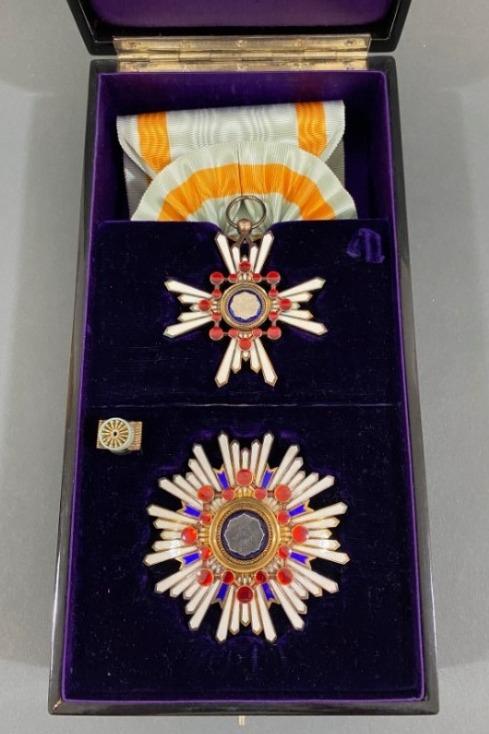
(1).thumb.jpg.38cff8cd9c5d55311a4208b0a83448ba.jpg)
